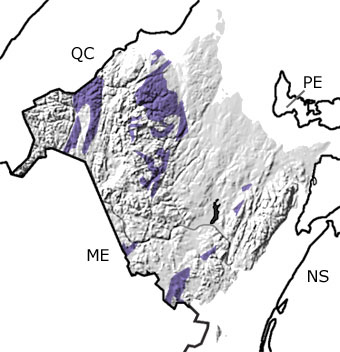Paleontology and geologyIn the Ordovician, the Iapetus Ocean that separated Laurentia and Gondwana was closing. As this ocean closed, subduction zones formed near both continents, which created volcanic island arcs. Evidence for these islands can be seen in the igneous and sedimentary rocks exposed in the northern and western parts of the province. These rocks contain slices of deep ocean crust, sandstones and mudstones from shallow marine environments, and volcanic deposits formed on land and under water. Among the volcanic rocks, fossils of hydrothermal vent clams have been discovered. Ordovician rocks in southern New Brunswick were part of the Avalon terrane that rifted from Gondwana. They include volcanic rocks from subduction zones near the terrane, as well as shallow to deep marine sandstones and limestones. These marine rocks contain fossils such as trilobites, brachiopods, conodonts, and graptolites. The fossils are different from those of Laurentia in the Early Ordovician, but they become more similar as the terrane approached the continent at the end of the period.
|




